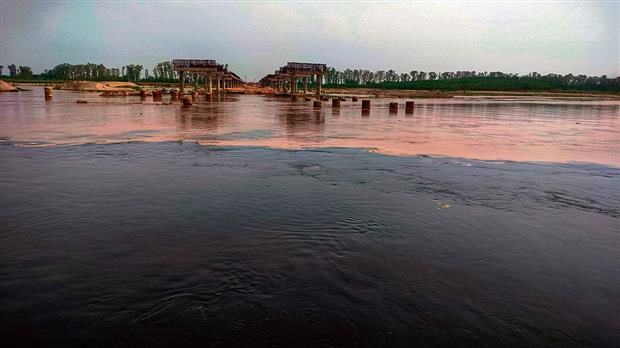Thousands of crores spent on Ludhiana's Buddha Nullah go down the drain
Shivani Bhakoo
Ludhiana, July 4
In Manakwal, Phirni, Wallipur Kalan, Walipur Khurd and Hambran villages, one’s queries about the residents’ wellbeing are met with disdain. “Have you been able to solve our problem? Each time you come here, all you do is ask questions! The average lifespan in these settlements has dropped to 60-65 years, and here you are again, wanting to know just how we are suffering!” a resident reacts sharply.
Called ‘Buddha Dariya’ three decades ago, the water body covers about 14 km in Ludhiana city and 15 outside its limits
Such responses are commonplace in these villages, and the people’s angst is understandable. Over the last three decades, governments have come and gone, over Rs 2,000 crore has been spent on the cleaning of Buddha Nullah — the scourge of Ludhiana — but the fate of these villages seems as dark as the water that flows in the polluted nullah.
Who’s to blame
Though industry is largely to blame for the discharge of untreated water into the nullah through sewers, dairy owners and households can’t escape responsibility. Domestic sewers are not fully equipped to handle and treat all the discharge.
Three decades of effort in vain
- 1996: Sutlej Action Plan is launched and STPs are set up at Jamalpur, Bhattian and Baloke
- 2009: National Environment Engineers Research Institute (NEERI) members arrive to see if zero-discharge technology can be started
- 2010: Union Environment Minister Jairam Ramesh visits nullah, announces treatment of water
- 2011: Jairam Ramesh inaugurates project, which bears no fruit. NEERI says unless root cause is addressed, water cannot be treated
- 2019: Central Pollution Control Board team collects samples, which fail to meet specifications of National Green Tribunal. MC claims rejuvenation project nearly complete
Will plug nullah on Sept 15: NGOs
Environmental NGOs have threatened to hold a mass protest march on August 15 and plug the nullah on September 15 to disconnect it from the Sutlej.
Where has Rs 650 crore gone?
When Smart City status was announced, a Congress MLA and MP, who is now a minister in the BJP government, were instrumental in deciding that entire development should take place in Ludhiana West, already a posh area… Apparently voting was done in secret, but we all know how everything is manipulated. Hundreds of crores were spent, but the affected areas were ignored. Where has Rs 650 crore gone? Several CETPs and STPs have been installed by spending thousands of crores, but people are still dying due to the toxic water. — Madan Lal Bagga, AAP MLA
A yet another attempt to revitalise the nullah recently was a fleeting ray of hope, but even after the investment of Rs 650 crore, and with the civic authorities claiming that the work is “nearly finished”, the misery of the residents is anything but over.
After the initial display of hostility, the villagers’ demeanour softens as they start speaking up. Jaswant Singh, a farmer of Wali Khurd, says he lost his wife to “kaala peelia”, which affects vital organs. Despite an expense of Rs 14 lakh on her treatment, she died at age 56.
Another villager, Kulwant Singh, laments that drinking dirty water had turned the hair of children in the area, aged between 8 and 10, grey. “Reporters visit us and netas assure us that our sufferings will end, but nothing changes.”
Glancing at his goats grazing in the fields, Biru Baba from Mand village says, “We must dig to a depth of 225 ft to get drinking water. How can my goats have access to clean water when I myself am deprived of it? This lethal, contaminated water is all we have. I have been losing the goats to various diseases.”
The rejuvenation work is said to be “nearly complete”, The Tribune informs Jaskirat Singh of the Public Action Committee, an NGO that closely monitors the nullah issue along with other organisations like Naroa Punjab. “If it is clean, ask them to consume the water now,” he counters, unimpressed.
The fact remains that the toxic water is killing people.
Near Walipur village, The Tribune team saw black water ominously snaking into the mighty Sutlej. From here, it makes its way to other districts, taking with it people’s basic right to clean water, and their hope for a better tomorrow.









